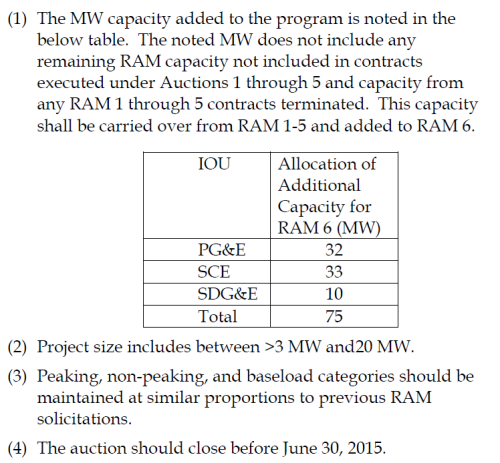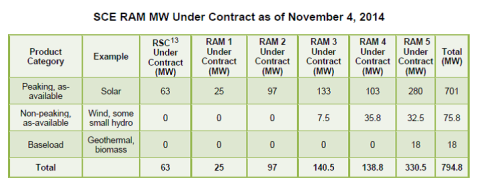Since the CAISO cluster 8 application period is closing in a couple of weeks at the end of April 2015, it is a good time to reflect on the past and present CAISO interconnection queue and give some perspective where this important barometer of large solar projects in development in CA stands.
For those that might not be familiar with this queue, let me remind you of a couple of things. This queue shows both the active and in-active larger solar projects that have started development in the California CAISO transmission network system. For SDG&E and PG&E this comprises projects that desire to connect on transmission lines at the 69Kv or larger level; however, for SCE there are legacy 69Kv lines that are classified in their distribution circuit system and interconnection requests of several 20MW ish projects are found on their WDAT distribution network interconnection queue listing.
The total PV active interconnection queue comprises 10.92 GW as of now. In general C7 projects are at the completed Phase I study stage, C6 projects are at the completed Phase II study stage, Most C4 projects are forced to be at the large deposit completed interconnection agreement stage, and C5 projects are close to the interconnection agreement signing stage with lots of $$ due to the Utilities.
At present there are 7.23 GW of active projects in Cluster 4 and earlier queues. In Cluster 4 the three largest remaining projects are:
- 240 MW in San Bernardino CO
- 221 MW in Riverside CO
- 200 MW in Merced CO.
I did not perform cross checking of recent RPS RFOs to determine if these have a PPA at the moment or to check on their present status. These are too big for RAM, of course.
For Cluster 5 – Cluster 7 there are 3.68 GW of projects active with the largest projects being:
- 370 MW in Maricopa CO
- 280 MW in Monterrey CO.
Here are some statistics on the dropout that has happened on Cluster 4 and Cluster 5 projects:
- Cluster 4 dropouts have been 27.33 GW
- Cluster 5 dropouts have been 12.78 GW
What a waste of time, money, and effort along with interconnection studies/deposit money because the Utilities were able to resist large amounts of solar in the CPUC PPA approval processes.






Recent Comments